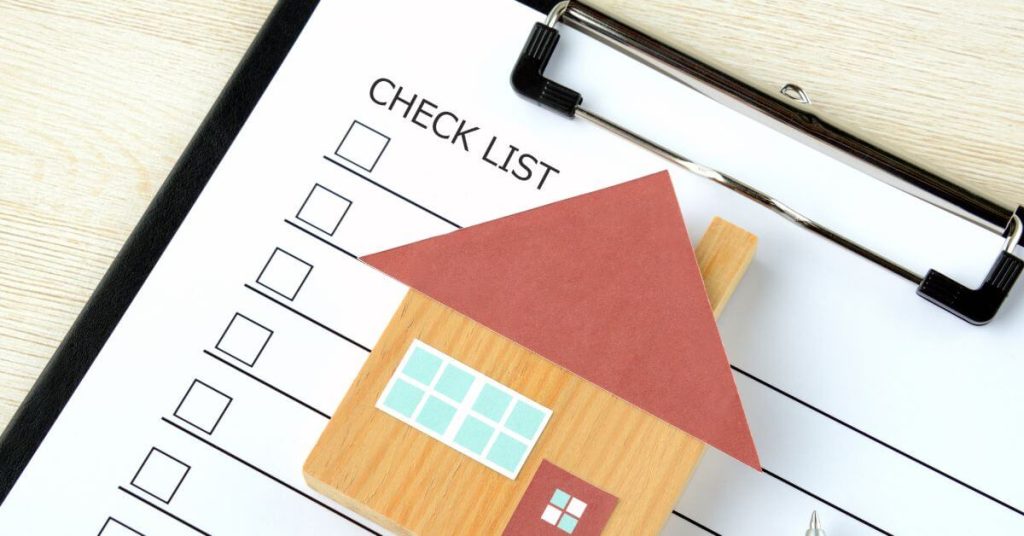Buying a home is a dream come true for anyone.
But it requires careful planning and preparation, lest you risk foreclosure and incurring costs you didn’t bargain for.
If you are considering FHA-loan mortgages, one of the most important factors to understand is the FHA loan occupancy requirements.
This article explores what these requirements are and everything you need to know about FHA loan occupancy. So, grab a cup of coffee, and let’s dive in.
What’s an FHA Loan?
An FHA loan is a type of mortgage loan that is insured by the Federal Housing Administration (FHA).
It is designed to help lower-income and first-time homebuyers qualify for a mortgage by allowing them to make a lower down payment (as little as 3.5% of the purchase price) and have less stringent credit requirements.
FHA loans are often popular among borrowers who don’t have a large down payment or a high credit score, but they do come with certain fees and mortgage insurance requirements.
Eligibility Criteria for Borrowers
The FHA requires borrowers to meet certain eligibility criteria in order to qualify for an FHA loan.
The FHA loan requirements protect both lenders and borrowers and help make sure that the home is being used as intended.
This makes a lot of sense, especially since the FHA is a government-backed loan program, that must only approve loans to people who can afford them.
These requirements include:
- A minimum credit score of 580
- A steady and verifiable income
- A 2-year employment history
- A valid Social Security number
- Proof of legal residency in the United States
- A down payment of at least 3.5% of the purchase price
- No bankruptcies or foreclosures within the past two years
These requirements also determine how much you qualify for. Lenders will also want to make sure that you don’t already own another property since you can rarely (there are exceptions in some cases) use an FHA loan to purchase a second home or investment property.
Occupancy Requirements for FHA Loans

The FHA loan process is a tall list of requirements, and you must be aware of the necessary eligibility criteria for each stage to complete your home purchase with minimal hassle.
Before signing any paperwork, make sure that you understand these restrictions and are prepared to follow them.
For the occupancy requirements, here are the key points to keep in mind:
- You must move into the property within 60 days of closing on the loan. That means that if you close on your loan in April, you must be living in the property by June at the latest.
- You must stay in the property as your primary residence for at least 12 months before you can lease or sell it. This is to ensure that your lender won’t lose money in case of default on the loan.
- You need to provide proof or residency in the home with documents such as utility bills, driver’s licenses, and other documents with current address information.
Note that the occupant requirements also apply if you’re refinancing your house with an FHA loan or applying for an FHA 203k loan.
FHA Loan Primary Residence Requirements
The FHA 60-day occupancy requirement is to ensure that the property is being used as your primary residence. This means that you must intend to live in the home as your main residence, and not use it as an investment property or vacation home.
Understandably, 60 days is a reasonable amount of time for you to move into your new home and start establishing it as your primary residence.
However, if unforeseen circumstances prevent you from moving in within 60 days, you may be able to request an extension.
FHA Loan Minimum Occupancy Period
The FHA 12-month minimum occupancy period means that anyone who receives an FHA loan must occupy the purchased property as their primary residence for at least 12 months.
In other words, you must live in the home as your main place of residence for a minimum of one year, during which you are not allowed to lease or rent out the property, as it must remain your primary residence.
This is to ensure that you do not use an FHA loan to purchase a property that you have no intentions to live in as your primary residence.
Additionally, it helps prevent borrowers from using an FHA loan to purchase a property with the intent to use it as a rental property or investment property.
Exceptions to the Occupancy Requirement

It’s important to remember that even if you qualify for an exception, it doesn’t necessarily mean that your loan will remain intact – you could default on your loan if you don’t make timely payments.
Additionally, these exceptions have specific requirements and restrictions. So, consult with your lender to determine your eligibility beforehand.
Here are the exceptions to the criteria:
- Military deployment or job relocation: If you’re in the military and get deployed, or if you need to relocate for a job, you may be allowed to temporarily leave your primary residence before the 12 months have passed without penalty.
- Divorce or increase in family size: If you go through a divorce or have a bigger family and need a larger home, you may qualify for an exception to FHA’s occupancy rules. FHA will require proof of new dependents and the property’s failure to meet your current family needs.
- Co-borrowers: In certain cases, you may be able to include a family member or friend as a co-borrower on your loan application. As long as at least one borrower lives in the home, all co-borrowers do not have to occupy the property within 60 days or for the majority of the year.
Consequences of Not Meeting the Occupancy Requirement
The exceptions to the FHA loan occupancy requirements may not always keep your loan intact. Being unable to meet the criteria comes with severe consequences.
First, you risk foreclosure on your property, and the FHA may require you to pay back a portion of your loan in order to bring it up to date.
On top of that, the FHA may also impose additional fees or charges as a result of not meeting its occupancy requirements.
So know your options to keep your loan in good standing should life throw a curveball at you.
Tips for Fulfilling the Occupancy Requirement

If you want to make sure you fulfill the occupancy requirement on an FHA loan, here are some steps you can take.
- Plan ahead. Make sure that you have a realistic timeline for when the home will be ready for occupation and understand what needs to be done to get it there.
- Move in as soon as possible: You are required to move into the property within 60 days of closing. To avoid any issues, it’s best to move in as soon as possible.
- Stay in the home as your primary residence: You must live in the home as your primary residence for at least one year. Make sure you’re prepared to commit to living in the home for that period of time.
- Keep your address updated: Make sure your address is updated on all your official documents and accounts, such as your driver’s license, bank accounts, and credit cards.
- Keep records of your residency: Keep records that show you are living in the home, such as utility bills, bank statements, or a lease agreement.
- Be truthful on your occupancy certification form: When you sign the occupancy certification form, you are certifying that you will live in the property as your primary residence. Be truthful and make sure you understand your obligations.
- Notify your lender if you need to move: If you need to move out of the property before the one-year occupancy requirement is up, notify your lender and discuss your options.
- Understand the consequences of not fulfilling occupancy requirements: Failing to meet the occupancy requirements of an FHA loan can result in serious consequences, such as default, foreclosure, and legal action.
It’s also a good idea to keep your lender, or us if you’re looking to purchase a house in these areas, in the loop so they can help guide you on how best to meet the occupancy requirement. They may even be able to provide assistance or resources that can make it easier for you.
At the end of the day, understanding this requirement is key for you to avoid any potential issues with your loan down the road.
Occupancy Comparison With Other Loan Types
When it comes to occupancy requirements, FHA loans have some pretty strict guidelines.
But they are not alone. Most government-backed loans have strict occupancy requirements to ensure that the loans are available for those who need them most.
Here is a comparison table of occupancy requirements for FHA loans, conventional loans, VA loans, and USDA loans:
| Loan Type | Primary Residence Requirement | Second Home Requirement | Investment Property Requirement |
|---|---|---|---|
| FHA Loan | Must be borrower's primary residence for at least one year | Not allowed | Not allowed |
| Conventional Loan | Must be borrower's primary residence | Allowed, but typically requires a larger down payment and higher credit score | Allowed, but typically requires an even larger down payment and higher credit score |
| VA Loan | Must be borrower's primary residence | Not allowed | Not allowed |
| USDA | Must be borrower's primary residence for at least one year | Not allowed | Not allowed |
It’s worth noting that each loan type has its own specific requirements and restrictions when it comes to occupancy, and lenders may have additional guidelines they follow. so discuss your options with your local lender and make sure you understand the requirements of the loan you’re applying for.
Frequently Asked Questions
Does FHA verify occupancy?
Yes, the FHA does verify occupancy for borrowers who obtain an FHA loan.
The FHA requires you to certify that you will occupy the property as your primary residence within 60 days of closing on the loan. Additionally, the FHA may conduct occupancy checks after the loan has closed to ensure that you are actually living in the home.
If you are not occupying the property as your primary residence, it may result in default and foreclosure proceedings.
What are the exceptions to FHA occupancy requirements?
There are several exceptions to the FHA occupancy requirements, including divorce, family changes, and military moves. We have detailed most of the exceptions in this article.
What is the initial occupancy period for FHA?
The initial occupancy period for FHA is 60 days from the closing of the loan. This means you must move into the property within 60 days of having closed on the loan.
What are the occupancy rules for federal home loans?
Like most government-backed loans, FHA loans have strict occupancy requirements that require the borrower to occupy the home as their primary residence within a certain timeframe after closing on the loan.
Are the Occupancy Requirements Too Stringent?
The FHA loan requirements can be intimidating, but that’s why we’re here to help and guide you through the process and ensure that you find the right loan with the best occupancy requirements for your unique situation.
With careful planning and prep work, meeting these occupancy requirements won’t be as hard as it seems. It’s like putting together a jigsaw puzzle, we can help you find all the pieces, put them together in the right order, and help make a beautiful picture.
Once you understand what’s required of you, it becomes much easier to ensure that everything is taken care of before closing on your new home.






